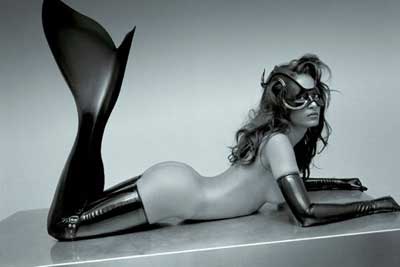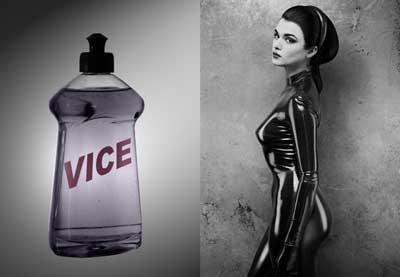| Bob Carlos Clarke, born in County Cork, Ireland in 1950, ended his life by running in front of train at a level crossing near Barnes in London around half past eleven last Saturday morning. I'd travelled up to London on the very train only two hours earlier. The police say that "the incident was not being treated as suspicious." It was a sad end to the career of a talented photographer who lived with his second wife and teenage daughter a few miles away in Chelsea, having sold his studio in nearby Battersea last year. |  |
|
| © Scarlett Carlos Clarke |
He'd sometimes joked that he had made more from selling property than from photography.
Carlos Clarke came to England as a schoolboy in 1964, attending Wellington College, a well known and expensive "public school" before going on to study art and design at the West Sussex College of Art. There he picked up a camera so he could ask a girl he fancied to pose for him - and a few years later she became his wife, although their marriage did not last.
After a degree-level course at the London College of Printing and finally gained an MA in Photography at London's Royal College of Art, then the only postgraduate photography course in the UK, in 1975. While a student he began taking pictures of the fetish scene, which was to become an important aspect of his work. Carlos Clarke said of his photography "It's not a job, it's an addiction," and for him it was very much an addiction to women and to sexual fantasies. He often used an analogy between sex and photography, suggesting that a good portrait session was a similar activity to making love to the sitter. Typical was also the advice he gave to those wanting to take up nude photography: "Do it to get laid; but get a real job."
Much of Carlos Clarke's work was on a sexually charged edge between eroticism and pornography, pursuing his own fascinations through images of sometimes oddly rubber-clad young women and other oddities. Some of the same energy (though fortunately at least generally rubber-free) spread into his portraits of celebrities including Liz Hurley, Jerry Hall, Rachel Weisz, Keith Richards, Marco Pierre White and Vinnie Jones as well as his advertising work for clients including Levi's, Smirnoff, Volkswagen, Pirelli, Wallis fashions and many more.
 |
| Fantasy Females Are Impossible
To Satisfy 2004 © Bob Carlos Clarke |
I talked with him several times on the phone about his last book, 'Shooting Sex', in 2003, hoping to write about him then, but somehow it didn't happen. Earlier books were an illustrated version of 'Delta of Venus' by Anais Nin (1980), Obsession (1981), 'White Heat' (working with chef Marco Pierre White, 1990), 'The Dark Summer' (1995) and his last book, 'Love Dolls Never Die', (2004).
I've never found many of Carlos Clarke's images erotic, not sharing his tastes for rubber, high heels or boots, preferring something more natural and earthy, reality rather than smooth and blemish-free fantasy. His work had a quality that made it rise about the run of the mill commercially successful glamour work, but still seemed to me in this respect very old-fashioned, fixated on a kind of 'glamour', sometimes straying into pointless pornography.
 |
| For Dolls That Do Dishes 2004 © Bob Carlos Clarke |
As Ghislain Pascal, who set up the agency Panic Pictures with him, said, "he will be remembered as Britain's answer to Helmut Newton." Newton's work was redolent of the naughty Berlin of the 1930s, that so fixated Helmut Newton, and Carlos Clarke's work often reminds me of the images in the magazines of his and my youth, although with a touch of something darker and continental. He was however a very versatile photographer, as his commercial work illustrates. He thought that his best work was the more documentary work and you can see a little of that in his pictures of people embracing (and more) in the slide show of couples.
Peter Marshall
